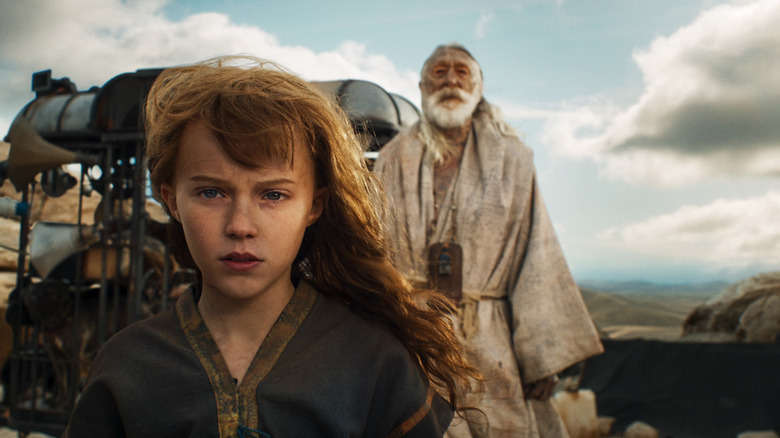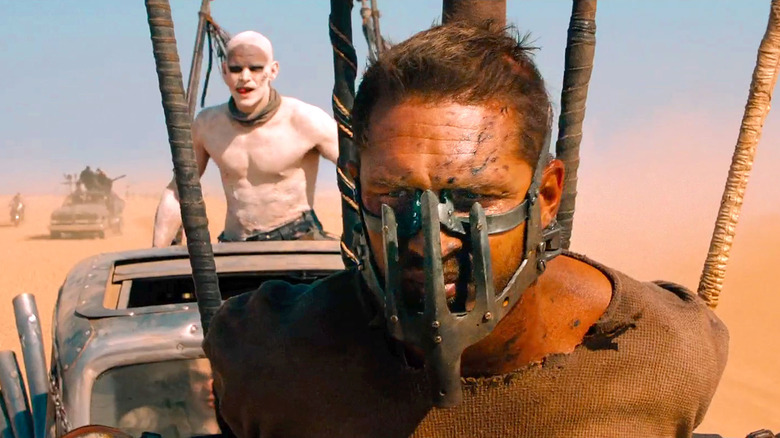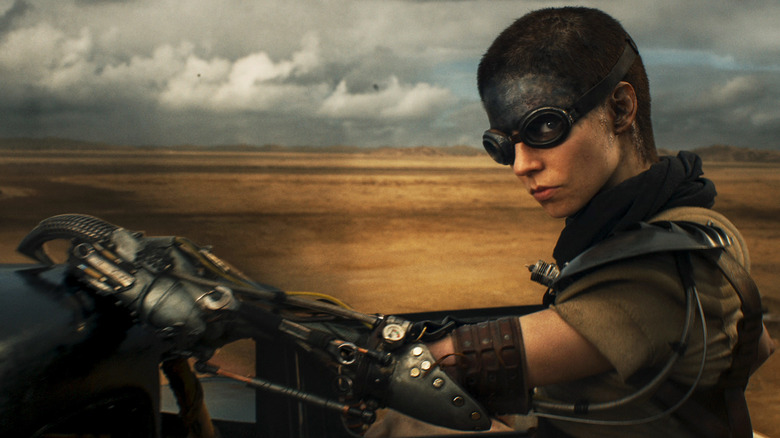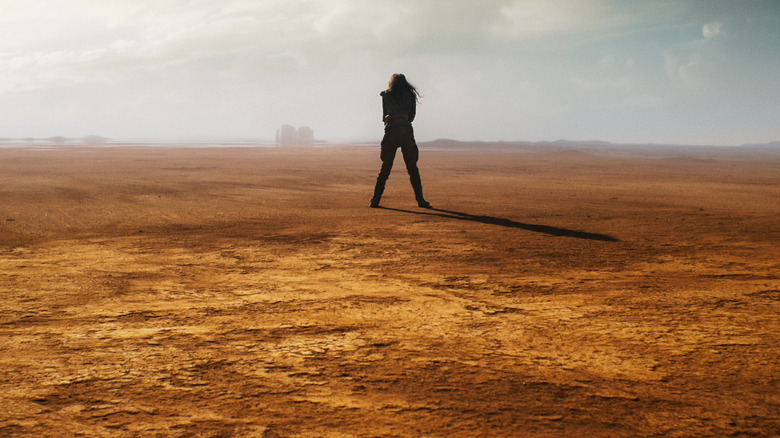Furiosa's History Man Explains The Biggest Mystery In The Mad Max Universe
This article contains spoilers for "Furiosa."
In the medium of cinema, sequels (as well as their kin: prequels, legacy sequels, remakes, reboots, etc.) still feel like a relatively recent phenomenon, especially as studios continue to seek to exploit intellectual property and squeeze as much blood (re: money) out of the same stone as possible. Yet despite the obvious capitalistic aims of film franchises, cinematic universes, and what have you, the tradition of continuing a story and/or telling new tales featuring evergreen characters is very ancient.
The "Mad Max" films, as conceived by the series' mastermind, George Miller, deliberately seek to continue those ancient, mythical traditions of storytelling rather than service more modern concepts of how to present a serialized narrative. Of course, this may not have always been the case, given that the original "Mad Max" from 1979 was made partially to exploit then-popular trends like the criminal biker film, the vigilante action movie, and so on. Certainly, beginning with 1981's "Mad Max 2" (aka "The Road Warrior"), Miller and his collaborators were interested in making "Mad Max" into a modern myth rather than, say, several chapters in one long story or anything similar.
However, by nature of how audiences watch most movies, some confusion arose once certain actors returned to the films in new roles, or — in the case of the latest entry in the saga, "Furiosa" — didn't return. Yet "Furiosa" contains Miller's most clever subversion of that issue yet: the character of History Man, who is a person tasked with keeping a record of the past through facts and legends that he may not remember with crystal clarity.
Different looks for Gyro captains, pilots, and Mad Max himself
Way before the character of History Man was conceived, Miller introduced the idea of an unreliable, mythological retelling of the film's events in "The Road Warrior" via the narration for the movie (voiced by Harold Baigent) coming from an unseen older version of a character in the story, the Feral Kid (Emil Minty). Even though the movie (in some territories) was called "Mad Max 2," and Mel Gibson returned to play Max Rockatansky, the narration established that we were seeing a larger-than-life recounting of these events, and maybe not an objective version.
In "Mad Max Beyond Thunderdome," a small portion of the story is narrated by the members of The Tribe Who Left, and the film features the first major instance of Miller making casting choices that serve character and story rather than continuity. Bruce Spence returns to play Jedediah in "Thunderdome," an airplane pilot who is explicitly not the same person as the Gyro Captain, who is a Gyrocopter pilot that Spence played in "Mad Max 2." With this casting, it's clear that Miller is seeking to evoke a similar archetype, but is not trying to connect the two characters.
Although Gibson portrayed Max for the first three films, he was replaced by Tom Hardy in 2015's "Fury Road." While this choice likely has as much to do with behind-the-scenes logistics as it does with the art itself, the film nonetheless furthers this theme of unreliable narrators (Max, in this case, who is self-admittedly insane) resulting in familiar faces looking changed or vice versa. In a cinematic landscape where Don Cheadle, replacing Terrence Howard in "Iron Man 2," has to deliver a pointed line to explain his looks to the audience for continuity's sake, the "Mad Max" films seem positively brazen.
The various changing faces of Furiosa
Given that Furiosa (as played by Charlize Theron) was the breakout character of "Fury Road," it made total sense that Miller wished to pursue making a prequel film about her, especially seeing as how a full draft of such a script had already been completed during the long gestation period for "Fury Road." What perhaps made less sense, at least when first announced, was that "Furiosa" would not see Theron return as the character, but would feature two new actors to portray the character as a child and a young adult: Alyla Browne and Anya Taylor-Joy, respectively.
While this decision was ostensibly due to Miller not wishing to involve de-aging technology in the making of the film, it also seems completely in line with the way he's approached casting in prior "Mad Max" entries. In fact, "Furiosa" features a hat trick: it involves an already-established character now played by a new actor (not just Furiosa but also Immortan Joe, who is played by Lachy Hulme, taking over for Hugh Keays-Byrne after the latter's passing), already-established characters played by returning actors (including, but not limited to, Angus Sampson's Organic Mechanic), and a returning actor portraying a new character (Josh Helman, who played the War Boy, Slit, in "Fury Road," turning up as Joe's son, Scrotus).
How History Man furthers the myth of 'Furiosa'
The key to all of these actor and character musical chairs, of course, is the mythological nature of "Furiosa" and the "Mad Max" saga. This time around, Miller doesn't merely use aural narration: he begins the film with a shot of History Man (George Shevtsov) introducing the story. Throughout the movie, History Man is called upon to recite various facts, a good number of which are dubious. In fact, during the film's climax, he explicitly states that one ending out of several is the truth, even though we're shown four of them. This, of course, calls into question whether we can trust his veracity or not.
In any case, Miller makes History Man into the in-universe explanation for why some characters look different from time to time while others look familiar but aren't. Through this use of the character, it becomes abundantly clear that the "Mad Max" films aren't intended as one rigid story with strict continuity. Instead, the movies are all one big, ever-mutating oral history of the Wasteland. Like all great myths, the details are not as important as the message.



